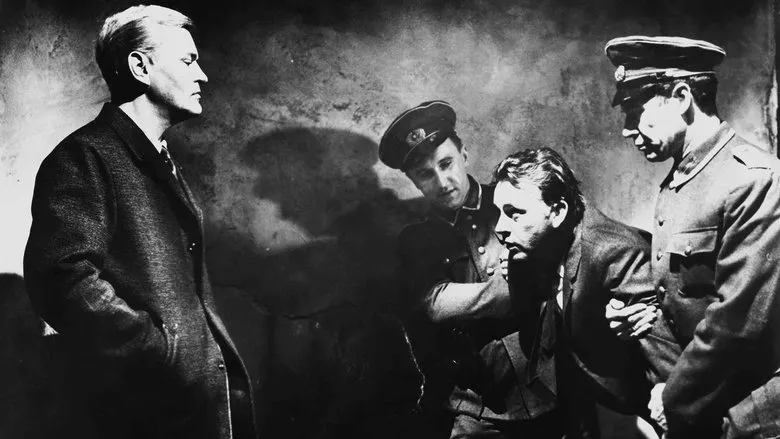It’s an immersive plunge into the murky depths of Cold War espionage, a literary experience that lingers long after the final page is turned. A true classic of the spy thriller genre, I feel compelled to articulate the profound impact it continues to have, decades after its initial publication.

A Cold War Conspiracy Unveiled
Set against the bleak, morally ambiguous canvas of the Cold War, the narrative meticulously follows Alec Leamas, a seasoned British intelligence officer whose carefully constructed espionage network in East Berlin crumbles with devastating consequences. Having witnessed his agents systematically eliminated, Leamas is called back to London, seemingly disgraced and broken. However, this is precisely where the labyrinthine machinations of John le Carré’s plot begin to unfold.
Instead of being cast aside, Leamas is coerced into a deceptively simple yet profoundly dangerous final assignment: to feign defection, sow discord within the East German intelligence apparatus, and ultimately orchestrate the downfall of Mundt, a ruthless and highly effective counter-intelligence chief. As Leamas meticulously prepares for his perilous journey into the heart of the enemy, he unexpectedly forms a tender, albeit strained, connection with Liz Gold, an idealistic young librarian. This budding relationship serves as a poignant contrast to the cynicism and deceit that pervade Leamas’s professional life.
The intricate web of deception tightens as Leamas finds himself ensnared in a show trial, designed to expose his ‘true’ allegiances and further Mundt’s demise. In a cruel twist of fate, Liz is unwittingly drawn into this dangerous charade, manipulated into providing testimony that implicates Leamas, thereby solidifying his fabricated persona as a double agent. Both Leamas and his supposed co-conspirator are detained, their fates hanging precariously in the balance.
Yet, this carefully constructed ruse is merely a prelude to a far more profound revelation. The true target, the ultimate purpose of this elaborate, emotionally brutal operation, transcends the simple elimination of an adversary. It is a chilling testament to the calculated ruthlessness of intelligence agencies, where individuals are reduced to pawns in a much larger, more cynical game. Leamas ultimately succeeds in his actual mission, but this ‘success’ comes at an unbearable cost, culminating in a harrowing, tragic attempt to cross the Berlin Wall with Liz, an endeavor that seals their grim destiny.

This backdrop, whether the Second Sino-Japanese War in Chinese narratives like The Disguiser and Lurk, or the post-World War II and Cold War settings prevalent in Western traditions exemplified by the James Bond series, provides a convincing stage for the high stakes and desperate measures inherent in spycraft. Such intense conflict lends profound credibility to the psychological and physical brutality that underpins the clandestine world.

Beyond the geopolitical stage, espionage stories often revolve around protagonists – typically agents operating deep behind enemy lines – who embody an indomitable commitment to their perilous missions. These characters frequently showcase extraordinary courage, sharp intellect, and an unwavering, if sometimes misguided, loyalty to their cause. Simultaneously, the very nature of their profession demands a constant vigilance against exposure, the gnawing possibility of betrayal, and the avoidance of dangerous emotional entanglements. This perpetual tightrope walk adds immense depth and complexity to the spy persona. While often celebrating acts of heroism, allowing readers to vicariously experience thrilling cat-and-mouse games, the genre also unflinchingly confronts the profound personal cost. The enforced isolation, the moral compromises, and the constant psychological strain endured by these agents illuminate both their extraordinary resilience and, perhaps more tellingly, the darkest and most vulnerable facets of the human condition.
Beyond Good and Evil: A Singular Perspective
What truly elevates The Spy Who Came in from the Cold from a mere spy thriller to a profound commentary on morality and geopolitics is its unflinching depiction of the aftermath of the main operation and, particularly, its stark conclusion. Following the harrowing culmination of the elaborate deception, Leamas and Liz are ‘released’ by Mundt, a chilling reflection of the intricate web where enemies are also pawns in a larger game, to facilitate their extraction back to the West.
During what should be their escape to safety, Liz, her idealism shattered, grapples with immense moral turmoil. She struggles desperately to reconcile the inherent ‘rightness’ and ‘wrongness’ of actions she has unwittingly endorsed. The revelation that a seemingly ‘decent’ man was sacrificed as part of Leamas’s mission, and her own cynical exploitation in the elaborate scheme, leaves her deeply troubled and disillusioned. Leamas, a man hardened by years of living in the moral grey, attempts to disabuse her of any simplistic notions of justice or righteousness.

A Tragic and Unshakeable End
The narrative reaches its devastating crescendo at the infamous Berlin Wall, a stark symbol of the ideological divide and human cost of the Cold War. In a final desperate act, Leamas and Liz attempt to scale this formidable barrier to freedom. Leamas, with his formidable training and desperation, manages to reach the summit. However, Liz, less agile and perhaps burdened by the trauma and disillusionment she’s endured, falters. She is tragically shot down on the East German side.

Presented with a brutal choice – to pull himself over to the relative safety of the West and his ‘own side,’ abandoning the woman he has come to love, or to descend into the chaos and almost certain death with her – Leamas makes a heart-wrenching decision. In an act of profound, self-sacrificial love that transcends any professional loyalty, he chooses to climb back down to Liz’s side. It is there, amongst the barbed wire and concrete, that he too is summarily gunned down, dying alongside the woman whose idealism he scorned but ultimately cherished.
This truly unforgettable and gut-wrenching conclusion is what cements The Spy Who Came in from the Cold as a timeless masterpiece. It rips apart any simplistic, black-and-white portrayal of espionage, instead offering a painful testament to the intricate complexities of human nature. In the crucible of love and impending death, Leamas and Liz are forced to confront not only their stark differences but also their shared humanity, collapsing together into that cold, hard dust—a haunting, indelible final image that challenges readers to question the very fabric of patriotism, duty, and sacrifice.